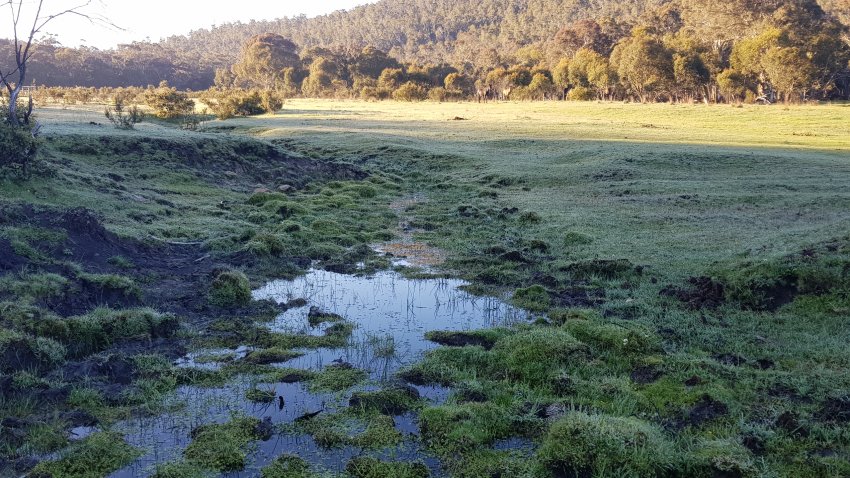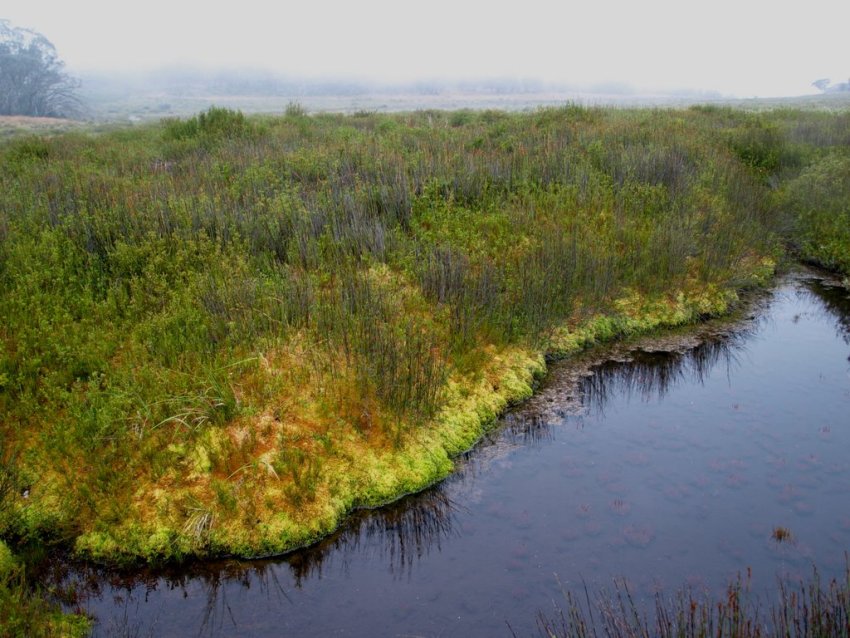
Those who want to be able to show their children and grandchildren a little piece of Australia’s natural beauty need to rally, because that beauty is under threat from the Kosciuszko Wild Horse Heritage Act 2018 — a law that turns a feral animal into a heritage icon.
This could be a story about endangered species and National Parks and the large, hard-hoofed feral horses that are destroying the Australian Alps. That is an important story.
But there is another, bigger, story.
The story of the feral horse is a story about modern Australia struggling with its settler colonialist past and only just starting to face the truth of who was already here then and how we ended up as we are today.
This land of many cultures and nations is under threat, not just from miners and loggers, but from people who want to believe that the world does not change and that being a coloniser gives them the right to walk all over everything they do not understand.
A line can be drawn from the feral horses in Kosciuszko to Uluru, the heart of our nation.
Anangu custodian Sammy Wilson said he “enjoys people wanting to learn about our country”. Sammy Wilson has “never lost sight of the sacred law of the country” and he “wants to teach people Uluru’s importance” — so they do not climb it.
Climbers see a different heritage: “My nan and pop climbed it in the 70s, so I want to do it. It’s everyone’s, no one can claim it”, said one.
“They [Anangu] have their belief, and I have my belief. I believe I have a right to climb it.”
Why is Wilson’s offer met with belligerence from people who want to, literally, walk all over his belief?
Horse damage.jpg

Settler colonialism has left some Australians stranded on a foreign shore, bereft of a sense of being and belonging. Their only identity is that of conquest and exploitation.
Queensland Senator Pauline Hanson shows us just how empty that identity can be when she says: “I was born here, that makes me indigenous”.
Hanson wants to compare some 3000 generations of stewarding the land to six generations that have destroyed it through mining, logging, fracking, bleaching and releasing feral pests including rabbits, blackberries, dogs, cats, pigs, deer and horses.
In Kosciuszko National Park, settlers have an animal that represents their belief in their right to conquest: the horse. Just like the climbers of Uluru, the feral horse is trampling all over the vegetation and watercourses that are part of a sacred heritage — a heritage that can, if we choose, belong to all of us.
The culture of conquest has created a myth, or a “special relationship” around these particular animals. Many of us have a special relationship with dogs, but trapping and poisoning feral dogs has rarely been contentious.
These folk see something else in feral horses. They love to quote A B Patterson, enlisting the spirit of pioneer conquest, as they imagine their forebears taming the “wild bush horses” and “turning their heads for home”.
But there is another version of the story. In the 1960s, poet A D Hope saw things quite differently in his Toast for a Golden Age:
He cracked his stock whip: that characteristic gesture
Made dust of the plains and the hurricane bore it away
A thousand years had gone to make the pasture
Which the wind or the flood destroyed in a single day
The settler colonists like to suggest these horses are related to the “Walers”, the mounts of the Light Horse brigade, conjuring up images of Beersheba and the “gallantry” of Empire. But, all bar one of the horses of the Great War never came home. They were completely expendable.
The Waler Horse Society of Australia dissociates itself from the feral animal.
The myth reaches bizarre heights in the children’s book series The Silver Brumby by Elyne Mitchell, awarded Children’s Book of the Year in 1959.
In this tale, the family of feral horses have Indigenous names: Thowra, Yarraman, Boon Boon and Brolga. The horses stand in for the wildness and freedom of a vanished people — a “noble savage” — even as horses and their riders were part of the slow torture by strychnine in the flour and smallpox on the blankets.
Sphagnum bog.jpg

There is no such thing as a heritage attached to feral horses.
Hope understood that the stockwhip and the horse are not symbols of modern Australia. They are symbols of settler conquest.
The horses in Kosciuszko National Park are no different to dogs or cats that have gone feral. Yet the settlers cling to them fiercely, fighting, cursing and threatening the “greenies” and “lefties” as “extremists” and “morons” because we do not accept their mythical version of Australian culture.
Richard Swain, a Wiradjuri man and alpine guide, speaks of the high country as a place where “the hand of humans has managed the landscape for thousands of years”.
That ancient management of catchments and rivers is a story that connects people to place: it is the story of Djamalan, the platypus, a “big story that begins at the Shoalhaven and comes up to the Monaro and then over to the headwaters of the Snowy River”.
Incredibly, people like Swain and Wilson are not spewing hate and violence: unlike the colonial settlers, hate is not part of their vocabulary.
Instead, they offer us an invitation to learn, to become part of this country. “This land needs to be our heritage, the responsibility of protecting it, our culture,” said Swain.
This is a rallying call to accept the invitation that Indigenous people, in spite of everything, continue to make to us. Theirs is a call to make our culture one that cares, protects and respects the past that existed before conquest.
This is a call to treasure our National Parks and to continue to make a place for the story of the platypus, the corroboree frog, the broad-toothed rat and the story of the sphagnum moss that holds the water in the catchment like a huge sponge.
This is an invitation to be part of the “big story”.
Please join us.
[Richard Barcham is a social researcher affiliated with the ANU Centre for Aboriginal Economic Policy Research. A rally will be held at NSW Parliament on August 22 calling for the repeal of the Kosciuszko Wild Horse Heritage Act 2018. For more information click here.]